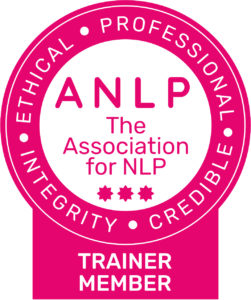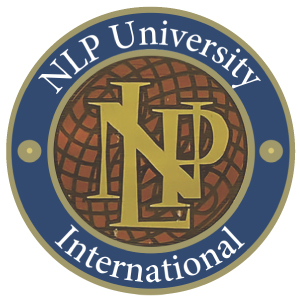How to Be Happier Using NLP Techniques

Happiness has been a topic of discussion since the early philosophers. As a practice and a state, it is just as relevant in the present day. As the COVID-19 lockdown begins to affect people’s mood, many are starting to search for new ways of coping with uncertainty, bringing balance to their mental health, finding inner peace under pressure, and improving their happiness.
In this week’s post, I will be providing you with some important NLP tools, to help improve your happiness levels, during the lockdown period and beyond.
But first, in order to better understand this illusive quality, I would like to briefly guide you through the history of happiness to date.
A history of happiness
Happiness has been a topic of discussion since the early philosophers.
Aristotle
For Aristotle, writing over 2,300 years ago, it was “Eudaemonia”, often translated as flourishing. It meant doing what you do best and doing what your natural talents and inclinations led you towards.
Seligman
Philosophers have continued to debate the subject ever since.
American academic Martin Seligman began to take a more rigorous approach in the 1980s, investigating empirically what actually made people happy rather than theorising, and in 1991 published his classic work, Learned Optimism.
Layard
Here in Britain, economist and political advisor Lord Richard Layard produced his book Happiness: Lessons from a New Science in 2005, arguing that political policy-makers must take the topic seriously.
He heads the influential Action for Happiness organisation. The Government now uses National Well-Being as a key measure of our nation’s success (combining both happiness and wealth).
“I just want to be happy”
Many people live with a sense that something is ‘missing’ in their lives. This can range from a low level of discomfort to more severe states of anxiety, anger or sadness. However, when I ask people what they actually want, the answer is usually, after a bit of a pause… “I want to be happy.”
A good start would be to use a definition that I have borrowed from Robert Dilts’ Logical Levels. If you are not familiar with it, Dilts’ model is a guide for the human condition, and helps answer questions like ‘Where are my issues located?’ and ‘At what levels can I most successfully make changes to bring about lasting happiness?’
The levels he looks at are the environment, behaviours, skills, beliefs and values, identity and sense of vision or purpose.
How NLP can create real happiness
To create real happiness, I believe one has to work at all of these levels, and I have designed a process which does just that.
Behind my thinking is the conviction that the levels affect one another; they don’t just exist in isolation. Lasting happiness can, in my view, only come from aligning the levels with one another. We want to have:
- A guiding sense of vision
- Our identity aligned to reach that vision
- Beliefs and values aligned to support that vision
- Our capabilities aligned to make that vision possible
- Our behavior aligned to make that vision happen in the environment.
Creating this alignment is not easy. Old patterns of thinking, feeling and behaving can be deeply ingrained, and can fiercely resist attempts to change or challenge them. Any process that truly sets out to create lasting happiness must be powerful enough to transform these old patterns.
Fixing identity through NLP
In my experience, blockages at the level of identity are often the hardest to address.
Once again, I turn to the work of others for inspiration, this time to Eric Berne, founder of Transactional Analysis, and in particular his concept of life scripts. Berne understood, in a way that more rational approaches to therapy do not, that the bases of human self-understanding (and of understanding the world) are not rational, and sadly not even adult.
People answer the deepest existential questions when very small, not with argument or philosophy but with stories, and those stories lodge in the unconscious mind, from where they continue to exercise irrational, often bizarre influences.
However, identity also contains huge amounts of talents that have propelled us successfully to where we are.
The process fully acknowledges these and ensures that nothing is lost as we ‘transform and include’ our old self to a new and positive version.
NLP means changing values to increase happiness
The process also has procedures for looking at beliefs and values. Many of our beliefs are useful and positive. Others can create biases that prevent us from getting the things we really need to be happy.
With values the problem is not so much about truth or even helpfulness, but about making decisions when they conflict. For example ‘In this situation do I choose loyalty or honesty?’ (Or is there a way to accommodate both?)
Creating happiness by empowering behavioural change
Behaviour, likewise, can be addressed in many ways especially the practice of mindfulness. I find the key to behaviour change is creating a balance of awareness and learning to live in the moment. The more we become capable of monitoring our actions and reactions, the more power we have over our lives.
One of the greatest threats to happiness is what Bertrand Russell called ‘thinking about the next thing.’ Learning how to stay present in our current activity and to enjoy the present moment is a key to happiness. In the final analysis, happiness is something you experience in the present.
Exercising power
This issue of power is also a crucial one. A key to change is profound faith in the power of action, in the power of focusing our efforts on influencing events, rather than feeling the victim of them. Taking responsibility for ourselves and being active, decision-making participants in life rather than puppets jiggling on the strings of forces ‘out there’ or of our own pasts.
This is the level of environment, which we can control (up to a point, of course) or let ourselves be controlled by. Needless to say, I believe that happiness is deeply connected with ‘being at cause’, in a way that is gentle, reasonable, considerate but unshakably determined – ‘yes we can’.
There is no such thing as permanent happiness
No set of psychological interventions can promise permanent happiness. Loss is a part of life and the appropriate period of sadness is part of the natural cycle of the healing process. But I believe strongly that happiness is the natural, healthy ‘default position’ for human beings, to which we are meant to return after negative life-experiences have been dealt with.
Did you like this post?
Then check out our events and courses!
Where to find us
For posts, events, free open days and more, follow NLP School on:
Twitter: @NLPSchool
Facebook: /NLPSchoolLtd
What to read next
Leading Yourself Through Uncertainty








